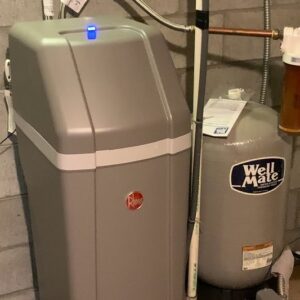If a water leak is not caught on time, it not only damages your home but can also increase your water bill. In countries like the US, these problems are common, especially in older homes. By following the steps given below, you can identify a hidden leak and make sure the pipes are not quietly leaking in your home on your own and get it repaired in time.
Find the Hidden Water Leaks in Your House in 8 Easy Steps
Step 1: Detecting a Leak from a Water Meter
- Turn off all water-using appliances – like faucets, washing machines, dishwashers, etc.
- Note the water meter – it is usually located outside the house or in the basement.
- Wait 30-60 minutes and check the meter again.
- If the meter reading changes, there is a water leak somewhere.
Note: This method only works for hidden indoor and outdoor leaks when you are not using water in the house.
Step 2: Check for leaks in bathrooms and kitchens
Check the Bathrooms for water leak:
- First check if the water constantly flowing from the tank into the toilet bowl.
- Do the food colouring test:
– Put a few drops of food colouring in the tank.
– After 15-30 minutes, check if the water turns coloured.
– If yes, the flapper valve is faulty – needs to be replaced.
Check the Kitchen Faucets and sinks for the leak:
- If you see moisture under a dripping tap or kitchen sink, there is a leak.
- Feel the pipes with your hand – you may feel wetness.
If you find anything suspicious then ask an expert like Milestone Electric, A/C, & Plumbing to take a look.
Step 3: Identify moisture in walls and ceilings
Leaks in the wall are easy to spot as it gives very clear indication:
- Peeling or flaking paint
- Signs of mould or dampness on the wall
- Foul smell (mould smell)
Expert tip: Slight bubbles in the ceiling or wallpaper can also be a sign of a leak.
Step 4: Check for leaks around the shower and tub
- Look for cracks in the grout of the tiles
- Watermarks around the tub
- Leaks underneath or on the side when running water
Expert tip: A moisture meter can measure hidden moisture in walls.
Step 5: Check for Outdoor water leaks
In this step, check the water sprinkler system, faucets and pipes for leaks. This can be done easily by doing the following:
- Sprinkler systems:
- Not turning on or overflowing
- Wet soil near sprinkler heads
- Garden faucet or pipes:
- Leaks around pipe joints
- Water dripping even when the faucet is off
Step 6: Check for leaks around appliances
Now it’s time to check the water using appliances in the house like Washing machines, dishwashers, water heaters to detect if any water leakage is associated with them.
- Water or rust marks underneath the appliance
- Water pooling behind or underneath the washing machine after doing laundry
Expert tip: Check the pipes behind appliances from time to time.
Step 7: Use professional equipment
It’s good to use professional tools to detect the water leaks in the house. It’ll help to find the leakage easily, accurately and of course in less time.
Here are some recommended tools:
- Moisture Meter – to detect hidden moisture
- Infrared Camera – to see the presence of water in walls
- Acoustic Leak Detector – to detect the sound of water flowing
Step 8: When to call a professional help?
There are some situations where you may need the help of a professional plumber. Here are some possible situations:
- The location of the leak is not found
- The leak is inside the walls, foundation or ceiling
- Mold is growing
Contact a licensed plumber or water damage specialist immediately.
Final tips to avoid water leaks in the house
✅ Check the water meter once a month
✅ Replace faucet and toilet sealing rubbers every 1-2 years
✅ Place trays under appliances to catch leaks early
✅ Have the sprinkler system checked annually
Conclusion on Hidden Water Leaks in Your House
Ignoring a water leak can prove to be costly – it not only causes water damage, but also damage to walls, floors and furniture. With the above methods, you can detect the leakage in time and prevent it.





